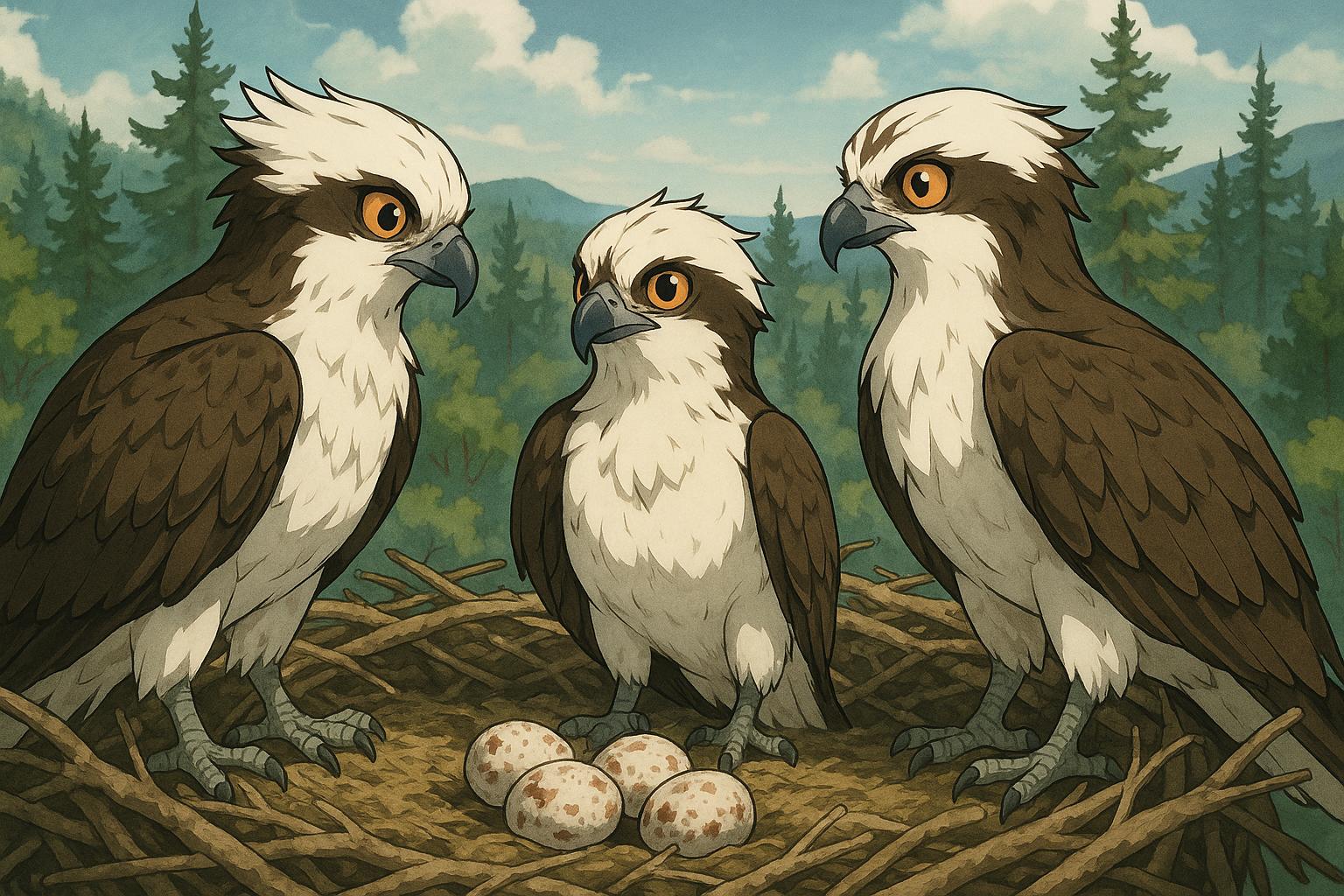In an intriguing twist of nature, a trio of ospreys has formed what can only be described as a love triangle at Glentress, near Peebles in the Scottish Borders. Captured on film by Forestry and Land Scotland, this remarkably rare scenario features two female ospreys and one male, sharing a nest that holds four eggs. This unusual behaviour highlights the complexities of osprey relationships, which are typically characterised by monogamous pairings.
Diane Bennett, a project co-ordinator for the Tweed Valley Osprey Project, commented on the dynamics observed, noting, “The only tension witnessed so far has been on the arrival of a fish delivery from the male as the two females both make a grab for it.” Such instances not only centre around the birds' survival but also raise compelling questions about the adaptability and social behaviour of these raptors. The impending hatching of the eggs is expected to add another layer of intrigue to this extraordinary situation.
The concept of multiple partners among ospreys is not entirely new. A similar incident occurred in 2011 at the Wildfowl and Wetlands Trust reserve in Caerlaverock, Scotland. There, a new male attempted to mate with a resident female, prompting a temporary absence of her original mate. Monitored via CCTV, this case underscores that such interactions, while rare, are not entirely unheard of, revealing the fascinating complexities of osprey mating behaviours.
The history of osprey love triangles goes back even further. For instance, in 2015, the plight of the "Lady of the Loch," believed to be the world’s oldest known osprey, drew attention when a younger male encroached upon her established territory. This incident not only raised concerns for her long-time partner’s survival but also prompted significant discussion about the impact of such dynamics on breeding patterns.
A notable American case in 2013 on Hog Island, Maine, involved another love triangle. An unattached female, known as 'Trudy,' temporarily displaced the original female, Rachel, allowing insights into the territorial disputes and mating behaviours among ospreys. These stories collectively illustrate that while ospreys are primarily monogamous and tend to form lifelong bonds, they exhibit a remarkable level of adaptability, often seeking new partners when circumstances change.
According to the Scottish Wildlife Trust, ospreys generally pair for life but will switch partners if a mate fails to return from migration. This adaptability highlights their resilience in the face of environmental and social challenges. Furthermore, ospreys typically share nesting duties, although the female takes on the majority of the responsibilities, including incubation and guarding the nest, while the male focuses on catching fish. This distribution of roles is essential for nurturing their young and ensuring the success of their offspring.
As observers eagerly await the hatching of the eggs in Glentress, the interplay among these three ospreys serves as a remarkable testament to the complexities of avian relationships and the adaptability of wildlife in ever-changing circumstances.
##Reference Map:
- Paragraph 1 – [1]
- Paragraph 2 – [1], [2]
- Paragraph 3 – [3]
- Paragraph 4 – [4]
- Paragraph 5 – [5]
- Paragraph 6 – [6]
Source: Noah Wire Services
